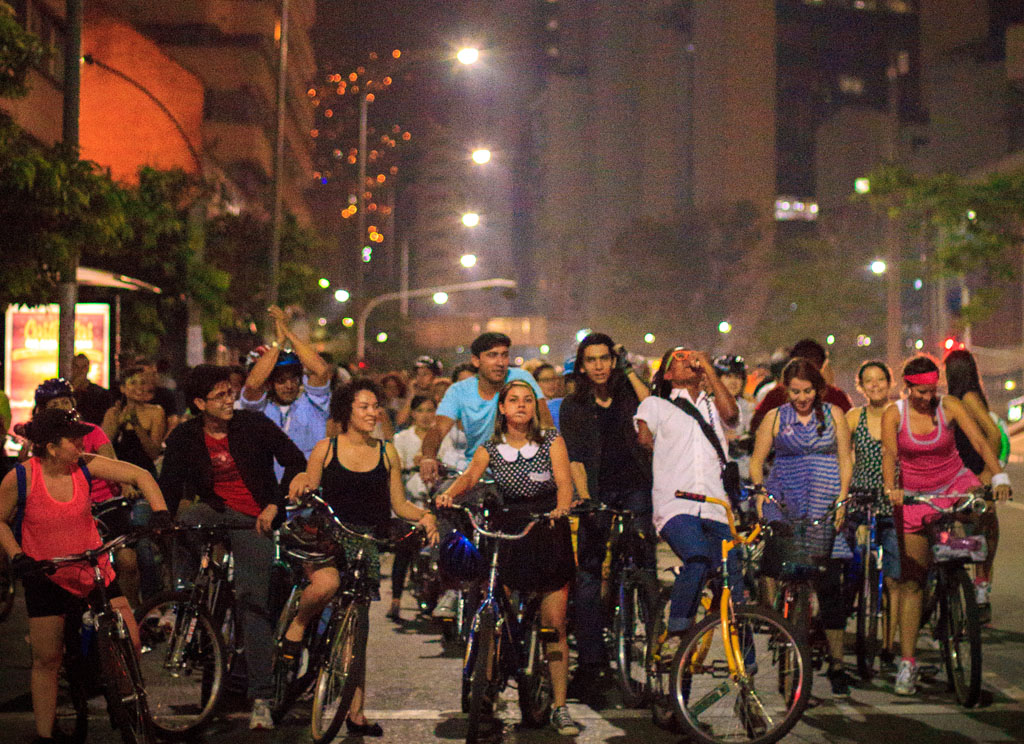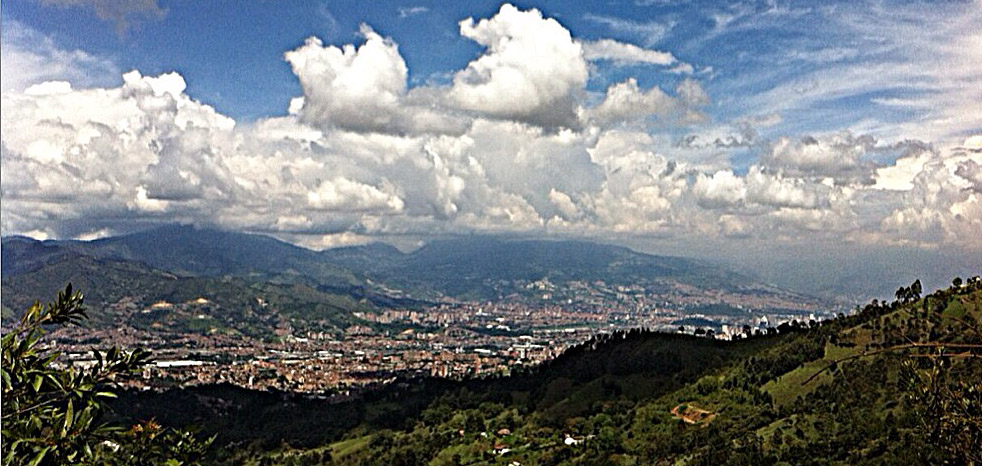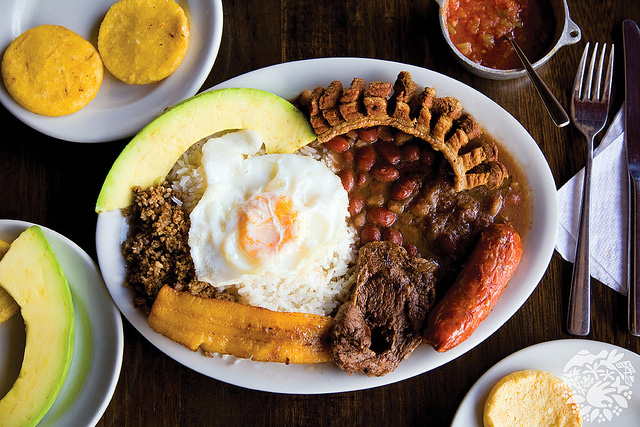Autumn Gear Guide
Find inspiration in our Gear Guide that will keep you out on your bike through wind or rain.
Download NowMedellín, Colombia is quickly becoming an exciting global travel and cycling destination.

Photo by Ricardo Zapata.
It is mid-February, and the forecast in Medellín, Colombia calls for daily average temperatures of 77 degrees (25 Celsius) for the next ten days. Nestled into the heart of the Aburrá Valley Region in the northern tip of the Andes Range, Medellín’s pleasant year-round climate has earned the city the nickname, “La Ciudad de la Eterna Primavera,” the City of Eternal Spring.
Although the hilly terrain and seasonal rainfall can be a deterrent for some potential riders who are turned off by the idea of arriving at their destination soaking wet or drenched in sweat, for many people, the threat of getting a bit damp isn’t enough to keep them off their bikes. Medellín is currently in the midst of a city-wide boom in urban cycling.
When Colombia’s capital, Bogotá, constructed over 186 miles (300 kilometers) of bike paths beginning in 1999, the rate of cycling in the city quintupled. By some estimates, over 300,000 trips are taken daily by bike in Bogotá.
Large shoes to fill, definitely, but policy-makers in Medellín are proving that they’re up to the challenge. The city has put in motion a plan to construct 249 miles (400 kilometers) of bike lanes over the next 15 years, and has recently launched EnCicla, a public bike share system serving all of greater Medellín.
While there is still a long way to go, especially in changing public perceptions about the safety or viability of biking for transport, Medellín is on the right track.

Photo by Ricardo Zapata
Maria Camila Molina Sierra, a lawyer in Medellín, said that while she has been riding a bike since she was five, it wasn’t until her law studies seven years ago that she realized biking was a viable and practical mode of urban transportation. Now biking has become such an important part of her life that she has become a vocal advocate for it, working as an organizer for the upcoming World Bike Forum, a global grassroots urban cycling forum taking place from February 26 to March 1, 2015, in Medellín.
“The bike as a transportation mode is gaining strength in the city,” said Molina Sierra. “It takes time to be installed, it is a cultural process.” She noted that while it is still mostly young people using cycling for transportation, it is gradually being embraced by all generations. On Wednesday nights, nearly 3,000 people will cruise out to the weekly sicleadas, or bike parties, and more people are out on bikes every Sunday for ciclovía, a weekly event when downtown streets are closed to cars to allow pedestrians and cyclists to enjoy them.
For anyone looking to escape the northern winter for a warm reprieve, the city of eternal spring has plenty to offer. “To ride around Laureles is a good plan,” said Molina Sierra. “There’s a beautiful and quiet green area with a cycling trail and it’s full of cafes and cool alternative sites. The cycling trail of the Carrera 65 is also amazing. Or if you like adventure and to be near nature while being in the city, the hills Cerro Volador and Cerro Nutibara have terrific viewpoints of the city.”
Like many places who have recently emerged from struggle, Medellín is brimming with the energy of residents determined to redefine the city and its culture. The city has undergone such radical social, cultural, educational, and urban transformation that it has grown from having a nearly non-existent tourism industry in the crime-ridden 1990s, to being a vibrant travel destination that now sees nearly 2 million visitors each year.

Photo by Cafe de Colombia
A bustling and infamous nightlife offers everything from dance clubs to small music venues to the festive street atmosphere of soccer fans emerging from the stadium. Street vendors and restaurants alike serve up classic Colombian dishes like arepas and empanadas, or for the brave and hungry, Colombia’s national dish of bandeja paisa, a cholesterol-heavy platter filled with steak, pork crackling, and chorizo sausage served on a bed of rice and red beans.
For the more vegetable-inclined, Medellín has a growing list of vegetarian and health-conscious options. “I recommend Verdeo and Espíritu Libre, they are amazing places with delicious food,” said Molina Sierra. “Or Mundo Verde and Pizzeria Olivia for those who like fine and healthy food.”
In the green belt area of the city, a popular cycling area, is the Botanical Garden. Benefitting from the constant spring-like weather, the Jardín Botánico Medellín boasts over 5,000 plants and flowers in nearly 40 acres of outdoor space. Or cruise along to Boltero Plaza and the Museo de Antioquia to discover the history of the Aburrá Valley region.
Bikerent, Medellín’s first bicycle rental shop, offers city cruisers and tandem bikes for anyone looking to ride for a day or more. For the weekly ciclovía, vendors rent bicycles on the street alongside Parque El Poblado and the San Fernando Plaza.
Between the weather, the nightlife, the proximity to the tropical north coast, and the burgeoning cultural scene, Medellín is already a global travel destination. And with the support from city planners and residents alike, it is quickly becoming a major urban cycling destination as well.
Find inspiration in our Gear Guide that will keep you out on your bike through wind or rain.
Download Now
Leave a comment